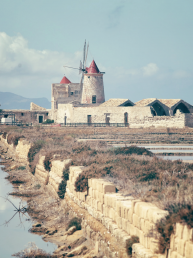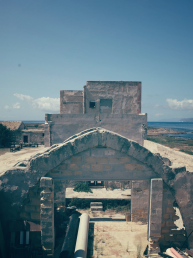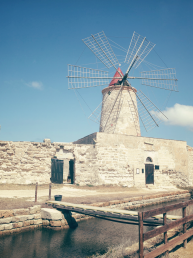our history
Centuries of life. From the Portuguese domination to the Pollina-Palermo family.
Salina Calcara has a prominent importance in the historical context of the traditional harvest of salt around this area. This has always been part of the life of several islets such as Ronciglio, Zavorra, Bassa, Colombaia and also of the islets belonging to the ancient Drepanum. Since the 16th century, Salina Calcara was considered as the main meeting point among all the people living in the hinterland of Trapani.

Famiglia Alfonso
Corona di Barone
1504/1638

Famiglia Ferro
Corona di Barone
1638/1838

Famiglia D'Ali
Corona di Barone
1838/1998
The salt-pans complex came into operation in 1593, but it was built in 1504 by Antonio de Alfonso, a Portuguese man who owned the area at the time. The Calcara Houses were built in 1586 and declared in 1593 by Biancofiore Riccio – Alessio de Alfonso’s wife – who wanted the Chapel of St. Alessio (no longer existing nowadays) to be built on the site in order to celebrate the Holy Mass for the memorial day of the Saint on the 17th of July. After the marriage between Olimpia (daughter of Alessio de Alfonso) and Cesare Ferro that occurred in 1622, Salina Calcara was included in the patrimony of the Ferro family. Then, it became property of the entrepreneur Giovanni Maria D’Alì in May 1838 until 1998. It was in operation until 1955, but after a flood, the traditional activity was suspended and only extensive aquaculture operations have been carried out.
When Salina Calcara was bought by the Pollina-Palermo family – in 1998 – the already existing building underwent works of renovation and the salt-pans complex was reactivated making the salt production possible once again starting from the 2008. Salina Calcara has an extension of 40 hectares and is composed, since its original plant, from a small Salina, called Stella (whose meaning is “Star”) and a large Salina, for a total of 33 tanks. Only 23 tanks are currently in operation.
Experience the tradition and discover the Salt-pans.
It is necessary to get lost into the colours and the history of an ancient tradition in order to fully understand the atmosphere of such a unique place.



